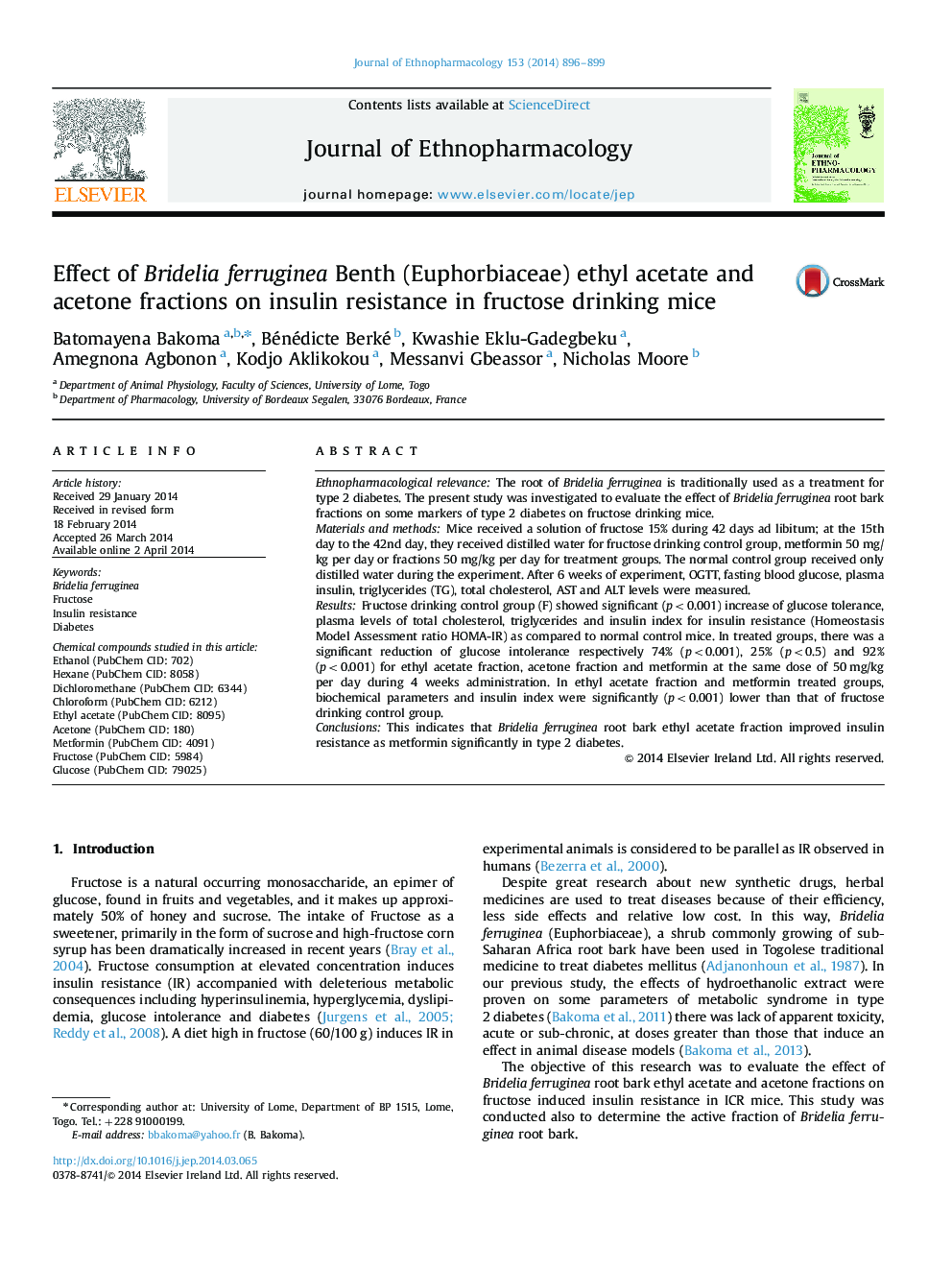| کد مقاله | کد نشریه | سال انتشار | مقاله انگلیسی | نسخه تمام متن |
|---|---|---|---|---|
| 2545120 | 1123934 | 2014 | 4 صفحه PDF | دانلود رایگان |

Ethnopharmacological relevanceThe root of Bridelia ferruginea is traditionally used as a treatment for type 2 diabetes. The present study was investigated to evaluate the effect of Bridelia ferruginea root bark fractions on some markers of type 2 diabetes on fructose drinking mice.Materials and methodsMice received a solution of fructose 15% during 42 days ad libitum; at the 15th day to the 42nd day, they received distilled water for fructose drinking control group, metformin 50 mg/kg per day or fractions 50 mg/kg per day for treatment groups. The normal control group received only distilled water during the experiment. After 6 weeks of experiment, OGTT, fasting blood glucose, plasma insulin, triglycerides (TG), total cholesterol, AST and ALT levels were measured.ResultsFructose drinking control group (F) showed significant (p<0.001) increase of glucose tolerance, plasma levels of total cholesterol, triglycerides and insulin index for insulin resistance (Homeostasis Model Assessment ratio HOMA-IR) as compared to normal control mice. In treated groups, there was a significant reduction of glucose intolerance respectively 74% (p<0.001), 25% (p<0.5) and 92% (p<0.001) for ethyl acetate fraction, acetone fraction and metformin at the same dose of 50 mg/kg per day during 4 weeks administration. In ethyl acetate fraction and metformin treated groups, biochemical parameters and insulin index were significantly (p<0.001) lower than that of fructose drinking control group.ConclusionsThis indicates that Bridelia ferruginea root bark ethyl acetate fraction improved insulin resistance as metformin significantly in type 2 diabetes.
Figure optionsDownload high-quality image (161 K)Download as PowerPoint slide
Journal: Journal of Ethnopharmacology - Volume 153, Issue 3, 14 May 2014, Pages 896–899